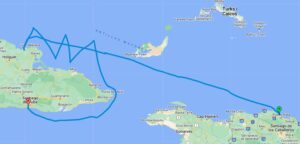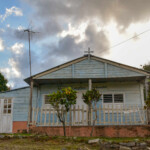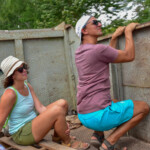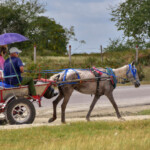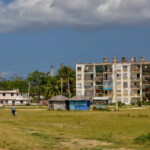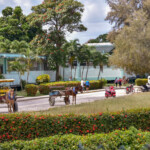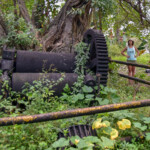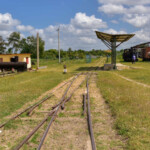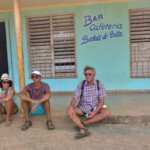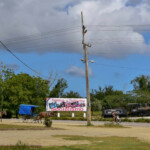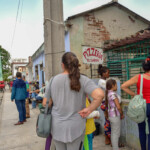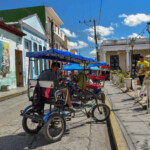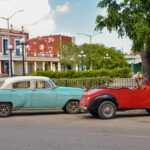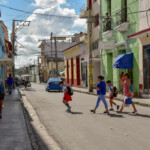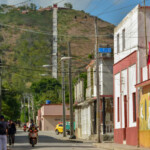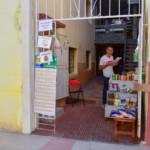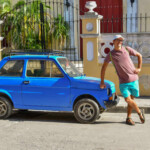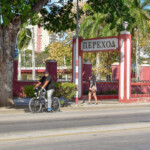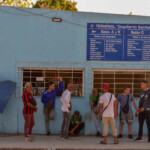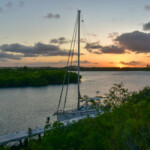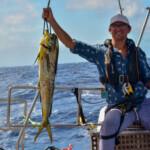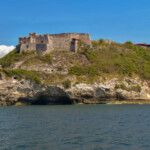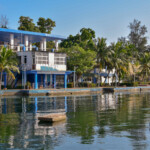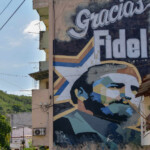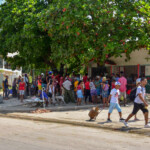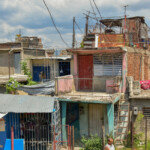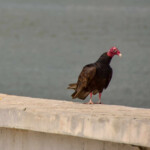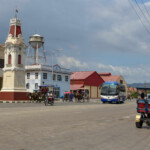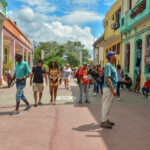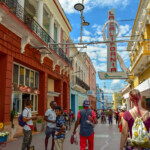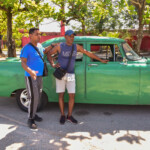Route: Cofresi-Puerto Vita-Santiago de Cuba
Date: 23.02-05.03.2024
Miles/hours: 771nm/170h
Armada at Ocean World Marina
We need an exit clearance document (Despacho in the local dialect) – such a document is issued by the navy, i.e. Armada. The local Armada branch is under the leadership of the capital, Santo Domingo. To issue Despacho, you need the consent of the management, and they use the local weather service. The effect of this is that they will not issue a permit until the Armada of Santo Domingo agrees. For unknown reasons, they claim that the weather is bad and they will not issue a permit. We’ll see what happens tomorrow.
The next day we get exit stamps from the Dominican Republic and Despacho. We are leaving – goodbye to the Dominican Republic, a country of contrasts, loud music and mountains of garbage.
The road to Cuba
It’s over 350 miles to Cuba, i.e. 3 days away. We decide not to stop anywhere along the way. We sail for 3 nights. On February 26, we enter Puerto de Vita.
Marina Puerto de Vita
We enter the marina guided by the marina chief via VHF. The approach track is deepened – everywhere it is more than 4 m. The approach track is well marked. We stand longside to a concrete pier covered with wooden slats, although not everywhere (in some places the screws stick out from the boards). The man shows the place via VHF and someone takes our mooring lines. The marina costs $0.6 per foot – all paid by card at the official rate. In all places in the marina you can only pay by card. The price of the marina includes electricity, water and showers. There is no toilet paper in the toilets, but this is a common problem in Cuba. The marina is in a fenced area with security and a gate. The lady at the marina office is very helpful, can handle many things and has a lot of local information. The marina is beautiful, among mangroves, calm water, friendly service. There is only one drawback – mangroves are inhabited by tiny flies that bite, their bites are very itchy, and the flies themselves are almost invisible – they pass through the holes in the window nets.
Entry clearance to Cuba.
We raise the Q flag and enter the marina. After mooring, a man in a white coat comes first and introduces himself as a doctor from the sanitary inspection. We fill out a small stack of papers, some common to the yacht, and some individual. We invite you for coffee, we exchange business cards and we can remove the Q flag. A moment later, a man in a white uniform comes and gives us a form to fill out. After filling out the form, three men come: a customs officer, the head of the marina and the same man in a white uniform presented as a student (and the others actually explain everything to him). We fill out another stack of papers, the gentleman takes photos of our passports, the yacht document and the freshly completed papers. On the way, a man from Immigration comes and gives you more forms – this time individual ones. We fill it out, sign it and return it. Another gentleman from the Department of Agriculture with regulations that you need to sign – the regulations are in English :-).
After handing in the papers, we all go to the office, where they take photos of us with a camera connected to a computer, scan our passports and stamp tourist cards (Cuban visas). We don’t want stamps in our passports. We have our own tourist cards – you can buy them here for $75. Tomek and I go to the marina office and sign more papers. In the meantime, 7 officials with 2 dogs (nice spaniels) come to the yacht to search the yacht for drugs. The dogs are very reluctant to get on the yacht, so they are brought in – they find nothing. In total, the yacht was visited by 13 officials and a lady from the marina. Everything went very smoothly. It took about 2-3 hours, despite the terrible pile of papers.
Puerto de Vita
A tiny port town. There is a marina and a small port there. They were just laying asphalt on the road to the port.
There are horse-drawn taxis, motorbikes and large trucks on the road. The town itself consists of several dozen houses, a cafe without coffee (but with beer from the fridge), and there is also a restaurant by the port. The town is well-kept, but rather poor. At the vegetable “market” you can buy 3 types of vegetables (yucca, cucumber and something local). At the end of the village, by the fishing port, there is a restaurant. There we eat dinner with an appetizer, beer and dessert for $10. For dinner we choose octopus, squid, fish fillet and chicken – all very tasty. For dessert, coffee with delicious ice cream.
Santa Lucia
We hitchhike to the town in a large truck. Santa Lucia is well-kept, clean and full of contrasts. There are horse-drawn carriages, old American cars, electric scooters, ordinary modern cars and generally everything that moves and can transport people. People are very friendly and want to help. The town has some parks – already neglected, but once very beautiful, a few shops (including something like our old peveks, where all prices are in dollars). We go for a pizza for 80CUP per piece. It’s more like a thick pancake with filling, but very tasty. We see an old sugar press, an old steam locomotive and a relatively modern one y railway station where people are probably waiting for the train. We return by pseudo-bus for 500CUP per person
Holguin
A “county” city. We go there by two buses for a total of 30CUP per person.
The town has more streets, the people are more “urban”. It is clean and well-kept, the houses are larger than in Santa Lucia, there are even a few skyscrapers. We buy a double cheese pancake (140CUP/piece).
We go for coffee (normally 30CUP, but with waiter service 66CUP). Then we split up, and in a moment we meet at the ETECSA sales point, where we buy cards for Internet access (25CUP per hour of access) – it works in cities on main squares, at ETECSA points and a few other places, there are no SIM casings. We use the internet for an hour and go further to explore the city. We visit an art gallery, walk the streets and grab some ice cream (40CUP per ball). Just a photo with a Fiat 126p in the background (driving :-)) and we go to the bus station. We return by shared taxi for $3 per person.
Departure clearance to the domestic port
This time I receive only one document – Crusing permit – a permit for swimming, where the subsequent ports visited will be entered. The rule is this: you can only go ashore in an international marina – there are about 10 of them in Cuba. You can stay at anchorages (e.g. overnight), but you cannot go ashore. I also receive instructions on how to bypass Guantanamo (at least 6 nautical miles from the shore in a defined area).
The road to Santiago de Cuba
According to preliminary calculations, it was supposed to be about 240 mm, but it turned out to be 360 mm, most of which (the entire northern part of Cuba) against the wind and against the current. The splash boat did the trick, but sailing with the wind is definitely better, but after passing the bend from the south of Kuba, the wind calmed down and the waves decreased, so we set up the gennaker.
Marina Marlin Santiago de Cuba
The marina consists of 2 concrete piers, a bit broken down. The marina area is closed (the gate is padlocked), but there is 24-hour service. For longer stays, the rate can be negotiated. The price includes electricity and water, but you have to pay extra for throwing away garbage – $5 per bag (any size). You can leave larger packages at Marinero (bottles, jars – they take them for free), and they also provide various services, such as ordering a taxi or selling beer (but everything is more expensive than outside the marina). There are practically no toilets or showers in the marina (none of the showers in the women’s section have a tap or strainer, and only some have a pipe). They turn off the electricity from time to time, like all over Cuba, and they turn off the water in the marina because something is leaking and flooding the bathrooms. If we want to fill the tanks, we have to ask them to turn on the water. There is also a significant inconvenience, because exhaust fumes from the chimneys from a nearby power plant fall onto the yacht and brown stains are formed on the laminate, which are difficult to remove (they come off with Cif).
There are several ways to get from the marina to Santiago – the first one is on foot – the way to the center via the “tourist road” is about 7 km one way. The second way is by bike (you have to have it and be very careful in the city so that it doesn’t get stolen), another way is to take a ferry to Ciudamar (1 cup per person) and go to the city by bus (1-70 cups per person). There is also a bus stop near the marina – it runs similarly to the ferry. You can also walk to the main road from the marina (about 2.5 km) and try to hitchhike or catch a bus there. Another option is to take a taxi (from the marina it costs $15-25 and outside the marina for $10). There is a green house near the marina where Pochito lives – a man who arranges various things – he can arrange a taxi, money exchange (the exchange rate is a bit worse than in the city), telephone cards, etc. Apparently there is also a bus from the marina to the city, but its timetable is unknown ( apparently it’s at 7:30 a.m. and 5 p.m. The ferry from the harbor near the marina runs 4 times a day (the first one at 7 a.m. and the last one around 5 p.m.).



